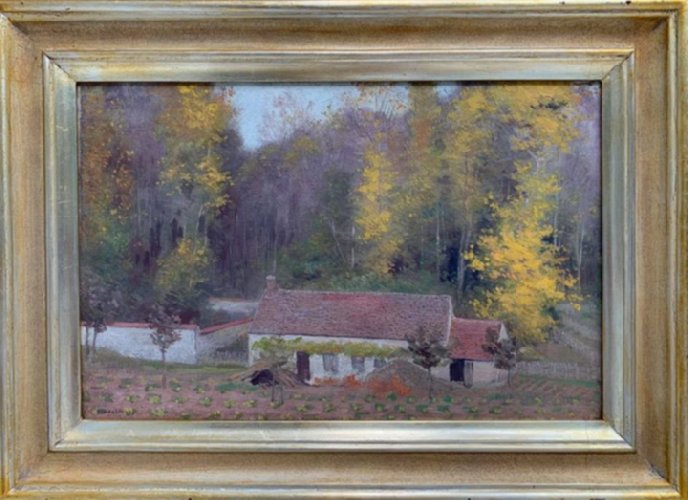Description:
Zygmunt Sidorowicz (1846-1881) graduated from the Lviv Polytechnic and Vienna Academy. In 1873 he left for Munich, where a year later he enrolled in the Academy. He shared the studio there with Alexander Kotsis, among others. Initially, in his work he was engaged in portraits and figurative compositions. However, under the influence of Kotsis and Munich art, he devoted himself to landscape painting.
Description of the painting:
This small landscape is a good example of paintings created by the artist after 1874 when, under the influence of studies in Munich and close contacts with Alexander Kotsis and Franciszek Streitt, he moved away from the large academic figures and portraits created at the beginning of his career. “Under the Forest” is a typically Munich composition with a meadow dominating the foreground on one side of the wall of the forest and on the other side opening up to a distant, lowland view with a blue sky above it. The whole is kept in a warm, uniform, typically muted tonality, giving the picture a moody overtone, only enlivened by abandoned, colorful details suggesting someone’s presence. The anecdotal layer of the work differs from the melancholic and often sad character of the “Munich” painting, leaning more towards the affirmative approach to reality of the French realists.
Sidorowicz’s landscape depicts a view to the edge of the forest and meadow. The canvas is almost completely filled with vegetation. The foreground is covered with green grass surrounded by small vegetation at the bottom edge of the painting. It serves as a border for the viewer who becomes a hidden observer. The right part of the pictorial field is occupied by small birches, the background of which is a hazy view of the distant landscape. The right upper corner of the canvas is filled with a gray-blue sky. A strong color accent in the center of the canvas is an abandoned light woman’s hat with a flower pinned on it, a blue umbrella, a black cylinder, and a brown fabric, probably a coat. The scenery and presence of these objects introduce an anecdotal layer to the painting, inviting speculation about their owners. The painting is dominated by greens, from fresh to dark, mixed with browns. This color scheme remains within the range of Munich sauces. The specific mood is created by the hazy composition of the work.


